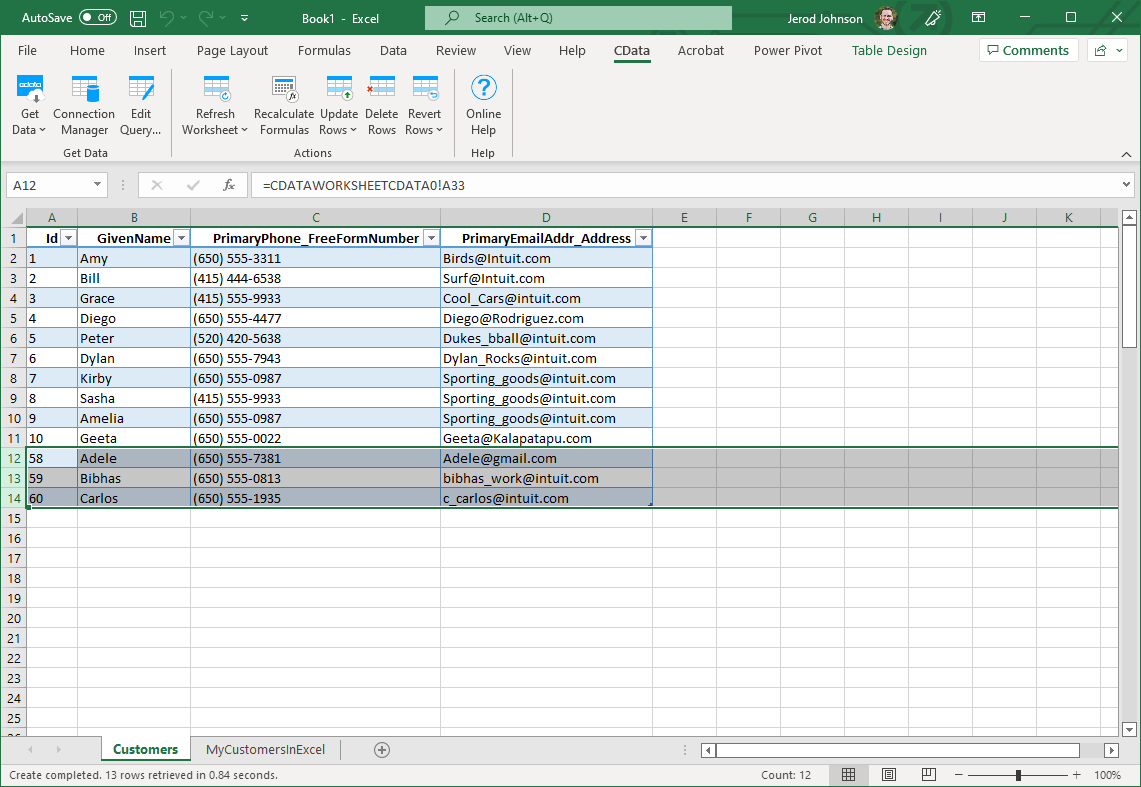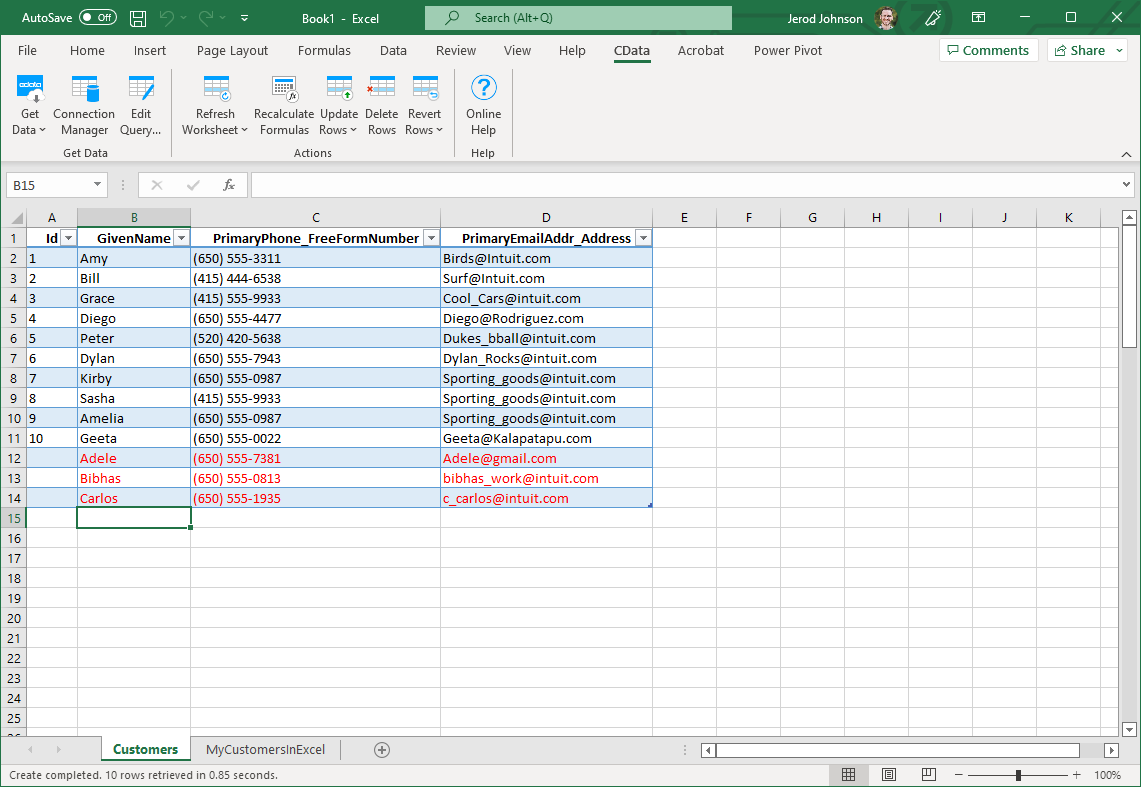Model Context Protocol (MCP) finally gives AI models a way to access the business data needed to make them really useful at work. CData MCP Servers have the depth and performance to make sure AI has access to all of the answers.
Try them now for free →How to update Dynamics 365 from Excel
This article explains how to transfer data from Excel to Dynamics 365 using the Excel Add-In for Dynamics 365.
The CData Excel Add-In for Dynamics 365 enables you to edit and save Dynamics 365 data directly from Excel. This article explains how to transfer data from Excel to Dynamics 365. This technique is useful if you want to work on Dynamics 365 data in Excel and update changes, or if you have a whole spreadsheet you want to import into Dynamics 365. In this example, you will use the GoalHeadings table; however, the same process will work for any table that can be retrieved by the CData Excel Add-In.
About Dynamics 365 Data Integration
CData simplifies access and integration of live Microsoft Dynamics 365 data. Our customers leverage CData connectivity to:
- Read and write data in the full Dynamics 365 ecosystem: Sales, Customer Service, Finance & Operations, Marketing, and more.
- Extend the native features of Dynamics CRM with customizable caching and intelligent query aggregation and separation.
- Authenticate securely with Dynamics 365 in a variety of ways, including Azure Active Directory, Azure Managed Service Identity credentials, and Azure Service Principal using either a client secret or a certificate.
- Use SQL stored procedures to manage their Dynamics 365 entities - listing, creating, and removing associations between entities.
CData customers use our Dynamics 365 connectivity solutions for a variety of reasons, whether they're looking to replicate their data into a data warehouse (alongside other data sources)or analyze live Dynamics 365 data from their preferred data tools inside the Microsoft ecosystem (Power BI, Excel, etc.) or with external tools (Tableau, Looker, etc.).
Getting Started
Establish a Connection
If you have not already done so, create a new Dynamics 365 connection by clicking From Dynamics 365 on the ribbon.
Edition and OrganizationUrl are required connection properties. The Dynamics 365 connector supports connecting to the following editions: CustomerService, FieldService, FinOpsOnline, FinOpsOnPremise, HumanResources, Marketing, ProjectOperations and Sales.
For Dynamics 365 Business Central, use the separate Dynamics 365 Business Central driver.
OrganizationUrl is the URL to your Dynamics 365 organization. For instance, https://orgcb42e1d0.crm.dynamics.com
Retrieve Data from Dynamics 365
To insert data into Dynamics 365, you will first need to retrieve data from the Dynamics 365 table you want to add to. This links the Excel spreadsheet to the Dynamics 365 table selected: After you retrieve data, any changes you make to the data are highlighted in red.
- Click the From Dynamics 365 button on the CData ribbon. The Data Selection wizard is displayed.
- In the Table or View menu, select the GoalHeadings table.
- In the Maximum Rows menu, select the number of rows you want to retrieve. If you want to insert rows, you need to retrieve only one row. The Query box will then display the SQL query that corresponds to your request.
- In the Sheet Name box, enter the name for the sheet that will be populated. By default the add-in will create a new sheet with the name of the table.
Insert Rows to Dynamics 365
After retrieving data, you can add data from an existing spreadsheet in Excel.
- In a cell after the last row, enter a formula referencing the corresponding cell from the other spreadsheet; for example, =MyGoalHeadingsSheetInExcel!A1.
![A local copy of a table. One row will be inserted. (QuickBooks is shown.)]()
- After using a formula to reference the cells you want to add to Dynamics 365, select the cells that you are inserting data into and drag the formula down as far as needed. The referenced values you want to add will be displayed on
the GoalHeadings sheet.
![The range of changes to update. (QuickBooks is shown.)]()
- Highlight the rows you want to insert and click the Update Rows button.
As each row is inserted, the Id value will appear in the Id column and the row's text will change to black, indicating that the record has been inserted.




